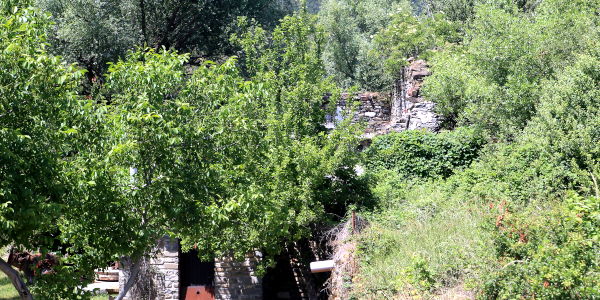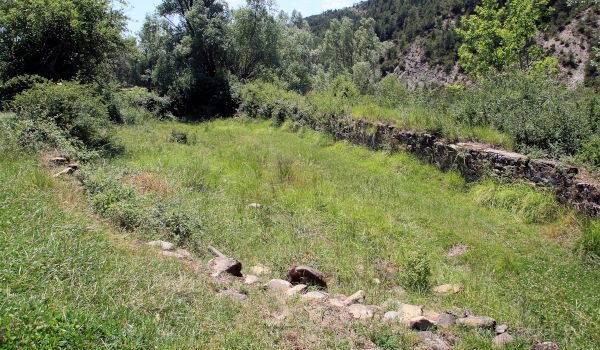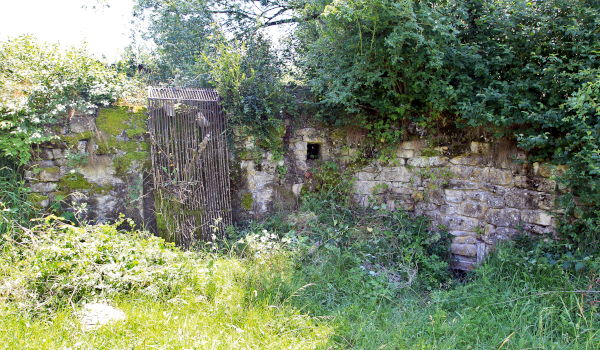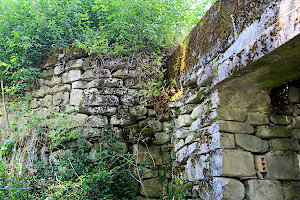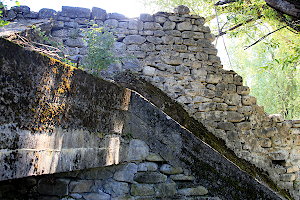
Aísa

area recreativa Santa Juliananext to the aforementioned river. From there a path is laid out which will bring you back to the village: after less than one km you'll be at the mill (1).
Pictures: 25.vi.2014


area recreativa Santa Juliananext to the aforementioned river. From there a path is laid out which will bring you back to the village: after less than one km you'll be at the mill (1).
Pictures: 25.vi.2014

There is however an explanatory panel (1) from which we learn that the mill produced meal mainly from wheat (for bread) and barley (fodder for pigs) and in lesser amounts also of oats and rye.
The upper floor served as living quarters of the miller. The last miller was a Mariano Ara Lanaspa. The mill was in use till the beginning of the 1960s.
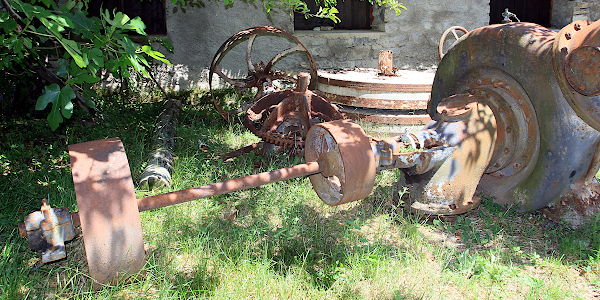

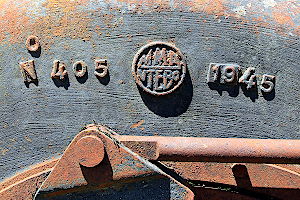

The turbine is tagged with: N° 405 MMA/UTEBO 1945 (4). MMA stands for . Read more about this company in our page about Salinas de Jaca. We have encountered the same brand in some other mills also and the oldest turbines we have seen are installed in Puyarruego and Aguinalíu (Serial 35 and 39 respectively, both dated 1916).
No equipment related to the production of electricity was found. The only trace we could find were some insulators (8) mounted in a small slit in the back wall. They helped to bridge the wall and connect the wiring inside with the grid outside.
The mill pond (9) is located behind the mill. When the pond was full the water reached above the roof of the mill (6). At the time of our visit the pond was still in a rather good condition (9): largely free of vegetation and with solid walls. Unlike ponds at other mills the walls do not converge into a narrow pressure pit or a saetín. Here the wall against the mill is wide and features three openings (10).
